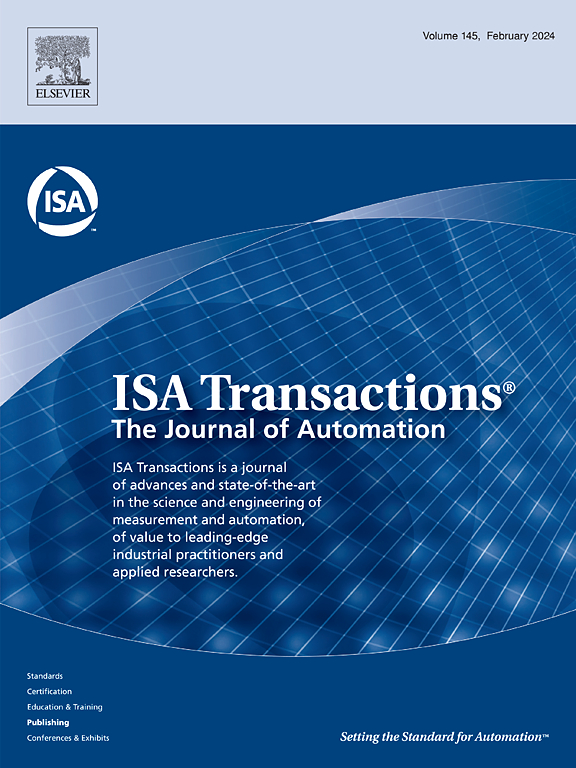Nonsingular fast predefined time convergence sliding mode control for construction robot
IF 6.3
2区 计算机科学
Q1 AUTOMATION & CONTROL SYSTEMS
引用次数: 0
Abstract
To solve the practical engineering problem that the angle of a construction robot with an arbitrary initial value completely and accurately track the desired trajectory, this paper presents a control strategy for extending the desired trajectory, and a sliding mode controller with predefined time convergence is designed for an uncertain construction robot. Firstly, the special characteristics of the construction robot’s trajectory tracking control are analyzed, an extended desired trajectory control strategy including the arrival phase and the precise tracking phase is proposed, and the design method of the extended desired trajectory in the arrival stage is given. Then, based on the improved non-singular fast sliding mode surface and a novel stability criterion of predefined time convergence, a predefined time convergence sliding mode controller based on a state observer was designed for the construction robot, which enables the angle tracking error of the construction robot to converge to zero within the specified time, ensures the angle completely and accurately tracking the original desired trajectory. Comparative simulation results show that the angle tracking error based on the proposed algorithm reaches 0.0004 rad, with an accuracy improvement of 33 %, and solves the problem of control torque chattering.
施工机器人非奇异快速预定义时间收敛滑模控制
为解决具有任意初始值的施工机器人角度完全准确地跟踪期望轨迹的实际工程问题,提出了一种扩展期望轨迹的控制策略,并针对不确定施工机器人设计了具有预定义时间收敛的滑模控制器。首先,分析了施工机器人轨迹跟踪控制的特点,提出了一种包含到达阶段和精确跟踪阶段的扩展期望轨迹控制策略,给出了到达阶段扩展期望轨迹的设计方法。然后,基于改进的非奇异快速滑模曲面和新的预定义时间收敛稳定性判据,设计了一种基于状态观测器的预定义时间收敛滑模控制器,使施工机器人的角度跟踪误差在指定时间内收敛为零,保证了角度完全准确地跟踪原期望轨迹。对比仿真结果表明,基于该算法的角度跟踪误差达到0.0004 rad,精度提高33 %,解决了控制转矩抖振问题。
本文章由计算机程序翻译,如有差异,请以英文原文为准。
求助全文
约1分钟内获得全文
求助全文
来源期刊

ISA transactions
工程技术-工程:综合
CiteScore
11.70
自引率
12.30%
发文量
824
审稿时长
4.4 months
期刊介绍:
ISA Transactions serves as a platform for showcasing advancements in measurement and automation, catering to both industrial practitioners and applied researchers. It covers a wide array of topics within measurement, including sensors, signal processing, data analysis, and fault detection, supported by techniques such as artificial intelligence and communication systems. Automation topics encompass control strategies, modelling, system reliability, and maintenance, alongside optimization and human-machine interaction. The journal targets research and development professionals in control systems, process instrumentation, and automation from academia and industry.
 求助内容:
求助内容: 应助结果提醒方式:
应助结果提醒方式:


